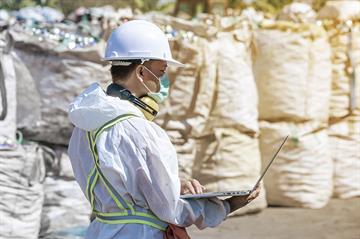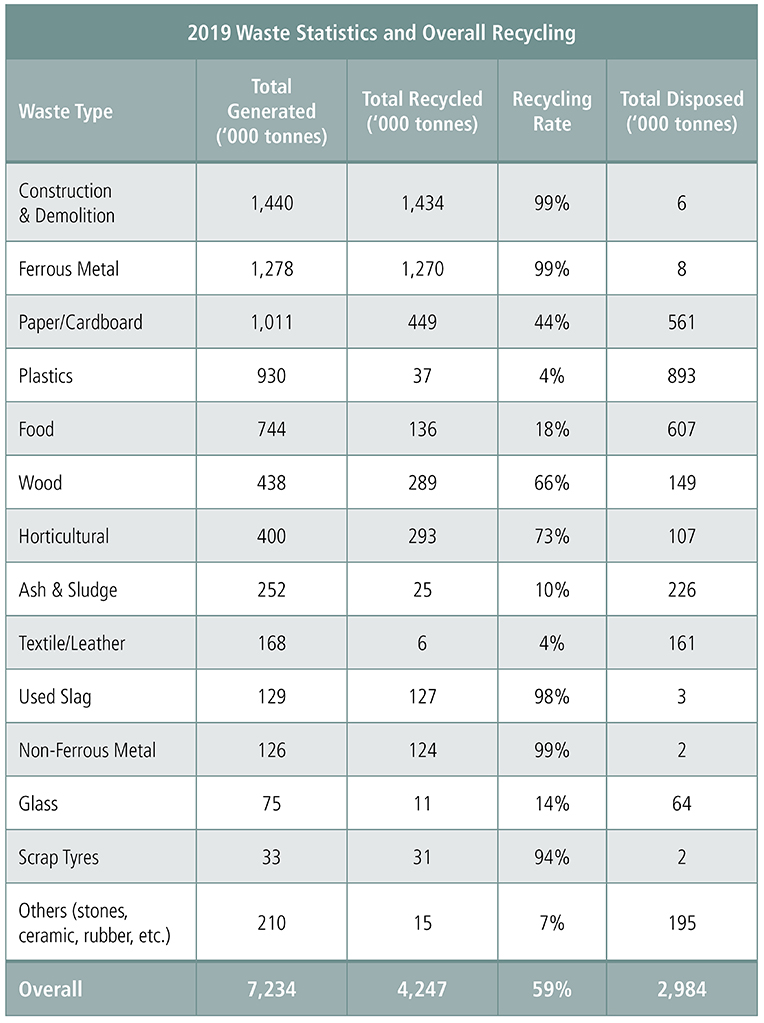 W
Waste generation is set to continue to grow. The World Bank estimates that waste generation will increase to 3.40 billion tonnes in 2050, marking an approximate 70 percent increase from 2.01 billion tonnes in 2016.
Propelling the massive increase in global waste generation are factors such as population and economic growth and increasing urbanisation.
In the wake of the immense volume of waste produced around the world every year, more and more businesses are finding new growth opportunities. There is wealth to be found in trash, so to speak, especially when companies make use of new technologies and the Internet of Things (IoT) to provide strategic solutions to the waste generation problem.
Statistics show that by 2025, the value of the global waste management industry is expected to hit US$530 billion, from US$330.6 billion in 2017. Global recycling rates are also rising, with metal predicted to reach US$434.55 billion by 2023. Plastics are expected to rise from US$25 billion in 2018 to US$33.8 billion by 2023.
Managing e-Waste
One of the leading parts of the waste stream is electrical and electronic waste (e-waste) caused by technological advancements and growing insatiable consumer demand. By 2019, approximately 53.6 million metric tons of e-waste was generated globally; an increase of 44.4 million metric tons in five years.
Singapore generates more than 60,000 tonnes of e-waste annually and the volume is expected to grow in tandem with economic growth and the prevalence of electrical and electronic equipment (EEE) among consumers and businesses.
Mr Ram Bhaskar, National Environment Agency (NEA)’s Deputy Chief Executive Officer (Environmental Protection) and Director-General of Environmental Protection said, ”Recycling e-waste protects human and environmental health and helps to conserve our earth’s precious natural resources.”
According to the NEA website, e-waste contains valuable resources that can be extracted through proper handling and treatment processes. It also contains small amounts of hazardous substances that may harm the environment and our health, if improperly disposed of.
New e-waste disposal system
As part of Singapore’s extended producer responsibility (EPR) scheme for electronic and e-waste management, NEA awarded the licence, the first of its kind, to Alba Group to offer a new electronic and electrical waste collection system, including receptacles in public areas, scheduled collection drives and ad hoc doorstep collection services.
Alba will help the public and businesses properly dispose of e-waste. All e-waste collected by the company will be sent to licensed e-waste recyclers.
Future in Metals Recycling
Making money from waste is BR Metals, an industry-leading specialist in the recycling of Platinum Group Metals (PGM) and one of Asia’s largest processors of end-of-life scrap catalytic converters, an emission-control device found in both gasoline and diesel vehicles.
Recognised as one of the fastest-growing companies in Singapore, BR Metals reclaims and returns an estimated 80,000 troy ounces of platinum group metals every year to the circular economy. Between the 2016 and 2020 financial years, its revenue shot up from US$4.8 million (S$6.3 million) to US$130 million (S$172.5 million). The company has two processing facilities, in Shaoguan, China, and Singapore, as well as offices in China, Singapore and Cambodia.
In an interview with The Straits Times (Jan 19, 2021) , Mr Frank Chen, founder and managing director of BR Metals, was quoted as saying, “Despite the Covid-19 outbreak, we have continued to grow and prosper, and I think that is a testament to how we’ve managed our business relationships and developed our company.”
The Plastic Waste Stream
World’s first PET Aerogel made from recycled bottles
A research team from Singapore found a solution to the world’s plastic pollution problem — by converting plastic waste into Polyethylene terephthalate (PET) aerogels.
Associate Professor Hai Minh Duong, at the Faculty of Engineering, National University of Singapore (NUS), led his team to develop the world’s first PET Aerogel made from recycled bottles. Not only did the innovation help to address the plastic waste problem, it spun off practical applications including heat and sound insulation, CO2 and dust particle filtering, personal care such as diapers, medical devices and oil and non-polar liquid absorption.
Converting plastic waste into high-value materials is not the only technological breakthrough the NUS research team has achieved. They also found a way to make the world’s first aerogels from rubber tyres. Globally, about a billion car tyres are discarded every year — only 40 percent are recycled, and the bulk are burned, releasing toxic gases. The novel rubber aerogels created by the NUS team offer remarkable properties for wide-ranging applications.
Plastic Recovery Facility in the pipeline
In Singapore, domestic waste makes up about 52 percent of total waste disposed, and there is currently no local facility that recovers contaminated plastics from domestic waste disposed of.
In January 2021, NEA awarded the tender for the feasibility study and design of a pilot plastic recovery facility (PRF) to engineering firm HTP GmbH & Co which specialises in the planning and design of waste management and recycling systems.
The feasibility study will help NEA identify and assess the design and capacity of the pilot PRF, as well as requirements for a suitable site. The study will also propose the technologies and equipment required to recover up to 72,000 tonnes per year of plastics waste for chemical recycling. In addition, the study will evaluate the cost and revenue drivers, optimal operating parameters, and quantify the cost-benefit analysis of diverting plastics from incineration for chemical recycling. This study is expected to start in early 2021 and be completed by 3Q 2021.
The facility would be “a key enabler in closing the waste loop, especially for plastics”, NEA said.
Managing Food Waste
According to the NEA website, food waste accounts for about 10 percent of the total waste generated in Singapore, but only 18 percent of the food waste is recycled. The rest of it is disposed of at the waste-to-energy (WTE) plants for incineration.
The amount of food waste generated in Singapore has increased by about 20 percent over the past 10 years and is expected to increase with the nation’s growing population and economic activity.
Singapore’s first urban insect farm
Transforming waste into high value biomaterials is the mission of Insectta, the first urban insect farm in Singapore to rear black soldier flies to process food waste and turn fly frass into organic food for plants and its larvae for animals.
The biotech company’s R&D team works with cutting edge technology and research to produce materials for a multitude of industries. For example, research by Insectta found that biochemicals extracted from the larvae can be used to produce chitosan, a potent wound-healing agent. The growing S$11 billion chitosan market sees applications not only in pharmaceuticals but also cosmetics, anti-microbial food packaging, and agrotech.
From food wastes to fertiliser
Improving the current food waste recycling rate is Westcom, a company that develops and produces equipment and products in food waste and other technology. Through its cooperation with A*STAR, Westcom developed its very own Waste-To-Fertiliser technology that reduces, converts and recycles food wastes into high quality fertiliser.
Westcom’s smallest digesters can transform 50kg of unconsumed food into 5kg of organic fertiliser in 24 hours while its largest digester can process more than 1,000kg of food waste in the same amount of time.
The global food waste management market size was estimated at US$34.22 billion in 2019. It is expected to expand at a compound annual growth rate (CAGR) of 5.4% from 2020 to 2027.

